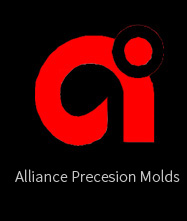 |
 |
The appearance design process involves multiple rounds of brainstorming to generate initial sketches. After an internal review, these sketches are developed into 3D models. These models are then presented to the client as part of a comprehensive proposal. The final outcome presented to the client is a product that excels in aesthetics, user experience, and surpasses expectations in terms of overall impact and functionality. This process ensures that the final product not only meets but exceeds the client requirements, delivering both visual appeal and a superior user experience.
The key focus of structural design is to optimize the assembly method of the product while ensuring that the appearance is maintained. It involves controlling the cost of the product effectively. Moreover, structural design requires considering structural innovation from multiple dimensions, which is essential to differentiate the product in the market. This approach not only emphasizes the uniqueness of the product but also ensures its practicality for production, thereby providing a guarantee for the smooth launch and successful implementation of the product in the market.
In the constantly evolving environment of today, facing and addressing the challenges at the forefront is an inevitable necessity for the design industry. Consequently, conducting thorough research on design trends becomes a significant advantage for the industry, especially amidst intense competition within the sector. Staying abreast of emerging trends not only helps in creating relevant and innovative designs but also positions a company as a leader in the field, adept at anticipating and responding to market shifts and consumer preferences. This proactive approach to design trend research is crucial for maintaining relevance and competitiveness in the dynamic world of design.
Alliance Precision Molds provides clients with comprehensive solutions in product functionality definition, along with the development and production of corresponding electronic circuits. The services encompass hardware and software development, testing, and the development and debugging of functional prototype models. With years of expertise in interface design, the company focuses on UI development and the research and development of PC and app interactions, offering a holistic approach to both hardware and software aspects of product design. This integrated solution ensures not only the functional excellence of the product but also enhances the user interaction experience, keeping pace with technological advancements and user expectations.
For design enterprises, possessing product awards and patents for their products can significantly attract more attention from customers in the competitive market. Both product awards and patent applications require official procedures. Viewing these processes as part of the innovation product is a result of observing market demands from another innovative angle. This strategy not only enhances the company market credibility but also underlines its commitment to innovation and quality, thereby reinforcing its competitive edge and appeal to potential clients and partners.
After completing the appearance and structural designs, the stage of prototype and model making allows for further visualization of the product. This crucial phase bridges the gap between design concepts and tangible products, providing a physical representation of the design for evaluation, testing, and refinement. Prototypes and models are essential for assessing the feasibility, functionality, and aesthetic appeal of the product, allowing for adjustments before mass production. This step is integral in ensuring that the final product aligns with design intentions and meets quality and performance standards.
Mold design involves enhancing traditional mold design practices with the full utilization of digital design tools. This integration significantly improves the quality of mold design and shortens the mold design cycle. By adopting advanced digital technologies, designers can create more accurate and efficient molds, which is crucial for mass production. This process not only ensures a higher level of precision in the final products but also contributes to cost-effectiveness and time efficiency in the manufacturing process, making it a vital step in the journey from product conception to market realization.
